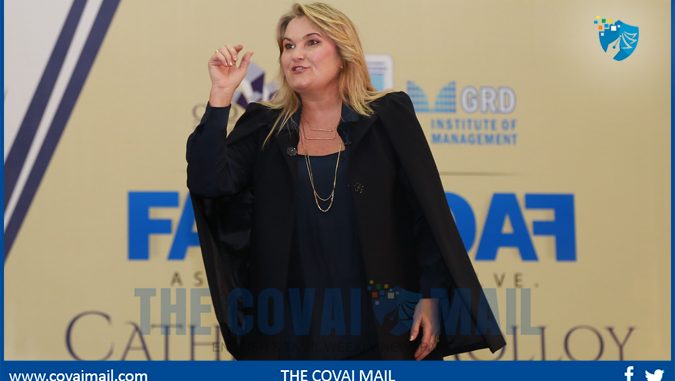
“People will forget what you said, people will forget what you did, but people will never forget how you made them feel,” said Maya Angelou. “To become a successful person in business or career you must apply this principle says,” Catherine Molloy, International Motivational Speaker, Facilitator and communication expert from Australia.

In her recent visit for “Face to Face”, an interactive session organized by GRD School of Commerce & International Business (SCIB) at Dr. GRD College of Science, she spoke about “The billion-dollar handshake” a way of communication that can turn a business or career a success in no time. The first step is to start with a gentle handshake and a big smile, she says stating that “The real power of India is the smile of the people. I believe a smile can turn things. To create an impact in your business or career you need to learn the basics of communication”.
You will have only 0.07 seconds to make an impact on your first impression says Catherine Molloy stating, the first seven seconds are very important, if you fail then you have to wait for another 12 chance to make an impression. The use of mobile phones has weakened our memory, to make an impression we need to make them feel, she says.
A handshake transfers our emotions to the other person. To have an influential handshake a person must have a proper eye contact, a firm grip, making web touch, shaking hands for 2-3 seconds and not pumping the hands for more than 3 seconds, said Molloy.
The body language will also play a vital role by giving signals away, one wrong move like slouching, stroking chin, rubbing eyes & nose will reveal a person’s feeling. So it’s better to avoid such behavior, she says.
“Our body changes the mind and the mind changes the behavior and the behavior changes the outcome,” quoted Catherine Molloy stating, a simple communication will change the perception of the mind and will make 50% of the business deals done right away by a gentle handshake itself. The rest lies with the body languages, mindfulness, level and behavior to the situations, she added.
